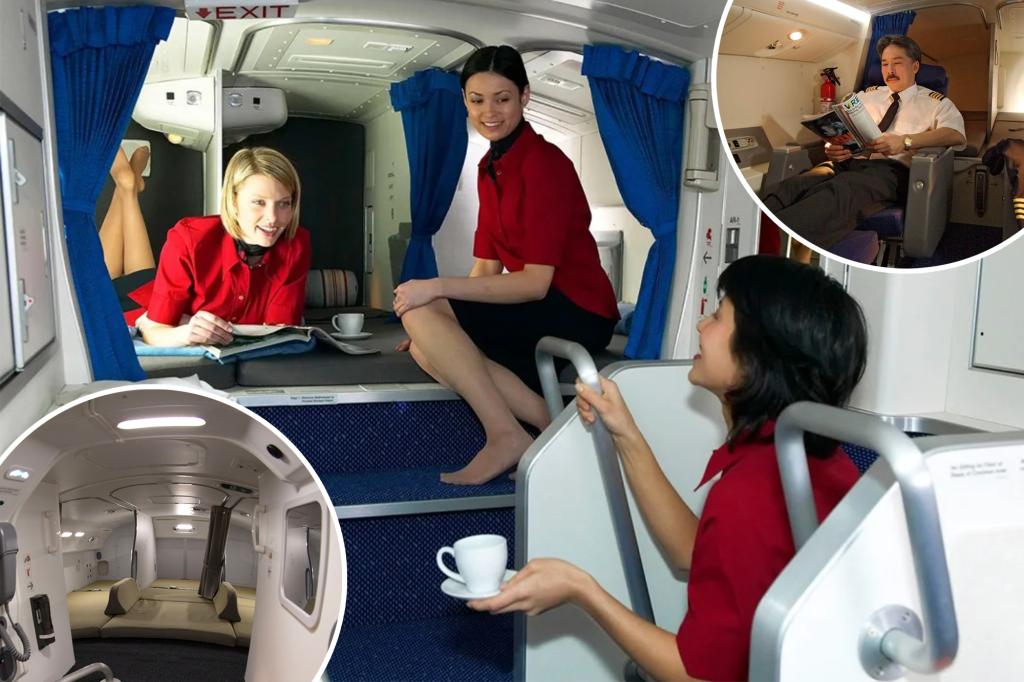Airplanes have secret, forbidden areas exclusive for crew members to rest during long-haul flights. These hidden “crew rest compartments” are equipped with padded mattresses, linens, lights, power outlets, air conditioning, and typical airplane safety equipment. The bunkers can often be found in the upper fuselage, cargo hold, or main cabin, hidden from passenger view. The compartments are accessed through secret passageways that are easily mistaken for closets, keeping the magic hidden from passengers.
United Airlines flight attendant Susannah Carr shares her experiences with these crew rest compartments, jokingly calling them “the catacombs.” The bunks might feel cramped for those who are claustrophobic but can be quite comfortable for others. The crew gets about an hour and a half of rest during long-haul flights, crucial for maintaining alertness in case of emergencies during the rest of the flight. The bunks are not only for sleep; crew members also use the time to read books, listen to audiobooks, watch movies, or simply relax.
Access to the crew rest compartments is determined by seniority in the aviation industry, with more experienced crew members having priority. Even though passengers do not necessarily want to know that flight attendants are taking breaks, they benefit from having fresh, alert crew members on board. Finnair flight attendant Karoliina Åman explained that the rest period is essential for maintaining a ready mindset throughout long-haul flights. Crew members use this time to give their feet and minds a break, ensuring they are prepared to take action if needed during the flight.
Different airlines have varied layouts for their crew rest areas, with some having bunks while others provide recliners shrouded by heavy curtains for privacy. Passengers sometimes open the curtains, mistaking the area for the galley, compromising the crew’s rest. Crew members often struggle with jet lag, affecting the quality of their rest during long flights. While some crew members can sleep during the rest period, others may use the time for relaxation activities like watching movies or reading. The crew rest period is crucial for keeping the crew alert and ready to respond to any unexpected situations during the flight.
Despite the challenges, crew members find ways to make the best of their rest time during long-haul flights. Åman shared that it can be a harsh experience to wake up from the brief sleep during a flight. The crew rest compartments offer a brief respite from the demands of attending to passengers, giving the crew a chance to recuperate and prepare for the remainder of the flight. While passengers may not be aware of these hidden areas, they play a vital role in ensuring that the flight crew remains sharp and capable throughout the journey. Access to these compartments is closely guarded, with crew members using secure and discreet entrances to ensure that passengers do not intrude on their rest time.















